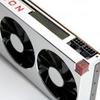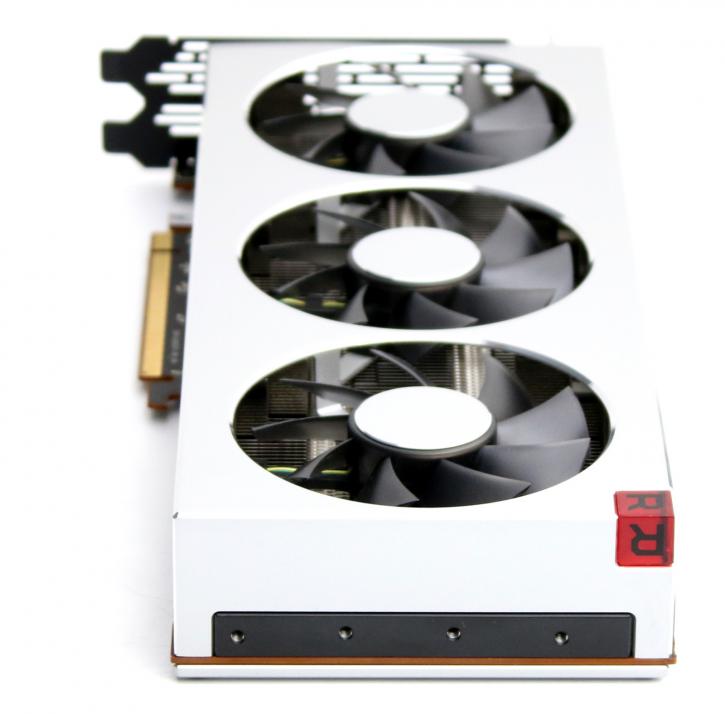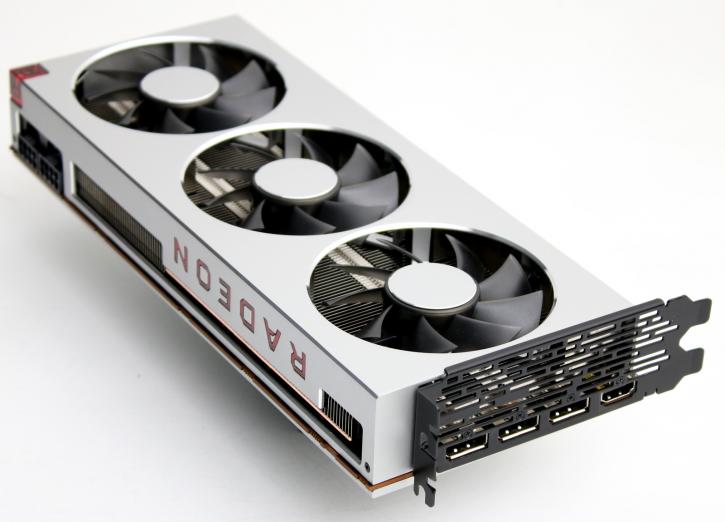Final words and conclusion
Final words and conclusion
You know, it is fascinating to see that (roughly) the 7nm GPU can perform so much better than the 14nm fabbed model. I mean under the hood we're looking at more or less the same GPU being shrunk yet now paired with two more HBM2 packages. The increase in performance works out well, I mean if we see similar things with 7nm Ryzen 3000 then I am excited. AMD is facing two issues though, the bill of manufacturing this product is steep, and that translates towards its 699 USD price tag. Why is that an issue you wonder? Well, I feel this is a 499 USD product. In its core basis, the performance is good, but it is a bit all over the place. It shows strength at ultra HD resolutions, then all of the sudden kicks ass in Battlefield V, but then drops in between RTX 2070 and 2080 on other titles. I expect a lot of varying benchmark results from all media as I do think the drivers are a bit CPU bound in say Full HD, holding back the card. Then again in Battlefield V it all of the sudden shoots through the wall in perf. Overall though, once the drivers mature I think that AMD users will be pleased with this product (but not the price). That other issue is acoustic levels, we'll talk about that in the following paragraphs though.
The Vega20 GPU & performance
Personally, I like the VEGA20 GPU based Radeon VII. I like how brutal AMD is going with that extraordinary HBM2 graphics memory partition. The reality is that you'll be hard-pressed to fill up that VRAM. There will be some games in the future that can pass 10~11 GB. But since it is not the current norm, the necessity for it is a bit overestimated. Probably, and a few of you will not like it hearing me say it, going for 8GB would have been just fine. And I say that as the build cost could have been lower. Then again one GPU fabrication line for both the MI60 and this Radeon VII probably is a cheaper thing to accomplish for AMD. But you get a crapload of graphics memory alright. I already stated that I am surprised to see the performance increase (with fewer shaders even) with a nearly same GPU, but now fabbed smaller at 7nm. Realistically the card makes good sense in the Wide Quad HD space (monitor resolution of 2560x1440). What is more interesting to see is that VEGA20 scales better in even higher resolutions. At a 3840x2160 (Ultra HD) pixel resolution the card can hold ground really well. Result vary per game title though, and that is a bit trivial to see.
Pricing
The 699 USD price tag is steep. I'm not saying the card isn't worth that money, as really it is expensive to fab and you do get the very latest 7nm fabrication. However, everything needs to be placed into a competitive perspective. At launch, we're not sure if there will be a lot of volume of these cards available. So while I understand why the card is priced at 699 USD, I, however, do feel it's too much for this product range and category. Hey, I say the same stuff about RTX 2080 and 2080 Ti. lovely gear but the pricing is off. The Radeon VII will be battling with factory tweaked GeForce RTX 2070 cards that sit in a 500-600 price space as well as the RTX 2080.
Cooling & Noise Levels
As you will have noticed, our card is loud under stress. We talked about this with AMD and our delta seems to be higher than expected. AMD claims the acoustic level should be fairly similar to that of an air-cooled Vega 64. So yeah, I'll leave that out in the open for now. Other reviews will be decisive in that factor and paint a more clear picture of whether or not our sample had an issue or if everybody is measuring the high acoustic performance levels. Regardless of anything Radeon VII will not be a silent product during gaming. So hopefully the AIB partners will come up with some other solutions. Personally, I would be more interested as to what the premium cooling solutions from AIB partners will bring on cooling and noise levels. We have not heard coil whine btw, which is good.
The last thing of the review we do is to dissect the card for the component analysis. Obviously after finishing that I have removed the thermal pad and replaced it with the new NT-H2 thermal paste from Noctua. That did get the temp down by 2 degrees, but it had no effect on acoustics. It seems fan RPM is tied towards a new (overall higher) junction temperature, so the fans rev up fairly fast close to 3000 RPM each.
Power Consumption
Moving from 14nm to 7nm logically could lower power consumption. Well, that is true ... however; AMD used that delta to clock the card higher, close to 1800 MHz. So that traded in the lower power consumption for more performance, hey it works. The TDP we measure to be spot on 300 Watts. That number varies a bit per game title and resolution of course. It's a substantial wattage, especially compared to the competition's products in the same performance bracket.
Overclocking
We have updated this article with the tweaking results based on the latest Afterburner beta. We've successfully have been able to get a boost lock going in the 1950 MHz region, however, it is throttling quite a bit due to many limiters like the power limiter. The HBM2 Memory is stable at 1200 MHz (effective) and all that yields into roughly 5 to 6% more performance.
Conclusion
The expectations for VEGA 20, or what is now called Radeon VII have been high. It is impressive to see what the 7nm node brings extra in performance. This card behaves well in the more high resolutions, but with some titles, it can cave in back in-between an RTX 2070 and RTX 2080. So is that enough for those spending 699 USD on it? Personally, I do not think so, and don't get me wrong here as I really like the card, but I do feel this is a product for the 499 USD range. The good thing for AMD is that not everybody will agree with me and I am sure that they'll sell plenty of these puppies. Please do make note of the acoustic levels, I would rather see this product liquid cooled or with a beefy ASUS or MSI cooler smacked on top of it to see if we can get them DBa levels down. Much like a Tesla has Ludicrous mode, this card comes with a staggering 16GB of HBM2 memory. Really, that is overkill. Then again thinking outside the scope of gaming, content creators and more professional workloads, here where it'll matter more. A lack of graphics memory, however, is not something you'll easily run into for the coming years. Battlefield V manages to pull roughly 70 FPS on average in Ultra HD. That's 44 FPS for Shadow of the Tomb Raider and 60 FPS in Far Cry 5. These are good values at such monitor resolutions and remember we always apply the better of not best relevant image quality settings. As mentioned, performance can be all over the place. One moment with certain titles it's just above the RTX 2070, where in others it runs far ahead of the RTX 2080. That is a bit weird to observe but has everything to do with the nature of the beast. Some games will benefit greatly from HBM2 on the extremely wide memory bus for example. It's the intricate little stuff like that that define the differences. We feel the Radeon VII is a very interesting and fascinating product. It will probably need a few driver updates to get fully up-to-snuff. The pricing though is the decisive factor, and only you guys can determine whether or not the 699 USD is worth it. We would happily recommend it though if you'd like to be that 1st next-gen 7nm adopter with the 16GB graphics memory that comes with it. The Radeon VII 16G will be available starting today at a price of 699 USD / 729 euros, buyers of a Radeon VII graphics card or a PC equipped with a Radeon VII will also receive three free games Resident Evil 2, Devil May Cry 5 and The Division 2.
Recommended Downloads
- Unigine Heaven Stress test
- MSI AfterBurner
- 3DMark FireStrike + Time Spy + Port Royale)
- Download AMD Radeon drivers
- Download NVIDIA GeForce drivers
Sign up to receive a notice when we publish a new article
Or go back to Guru3D's front page
- “You Know Nothing, Jon Snow”



